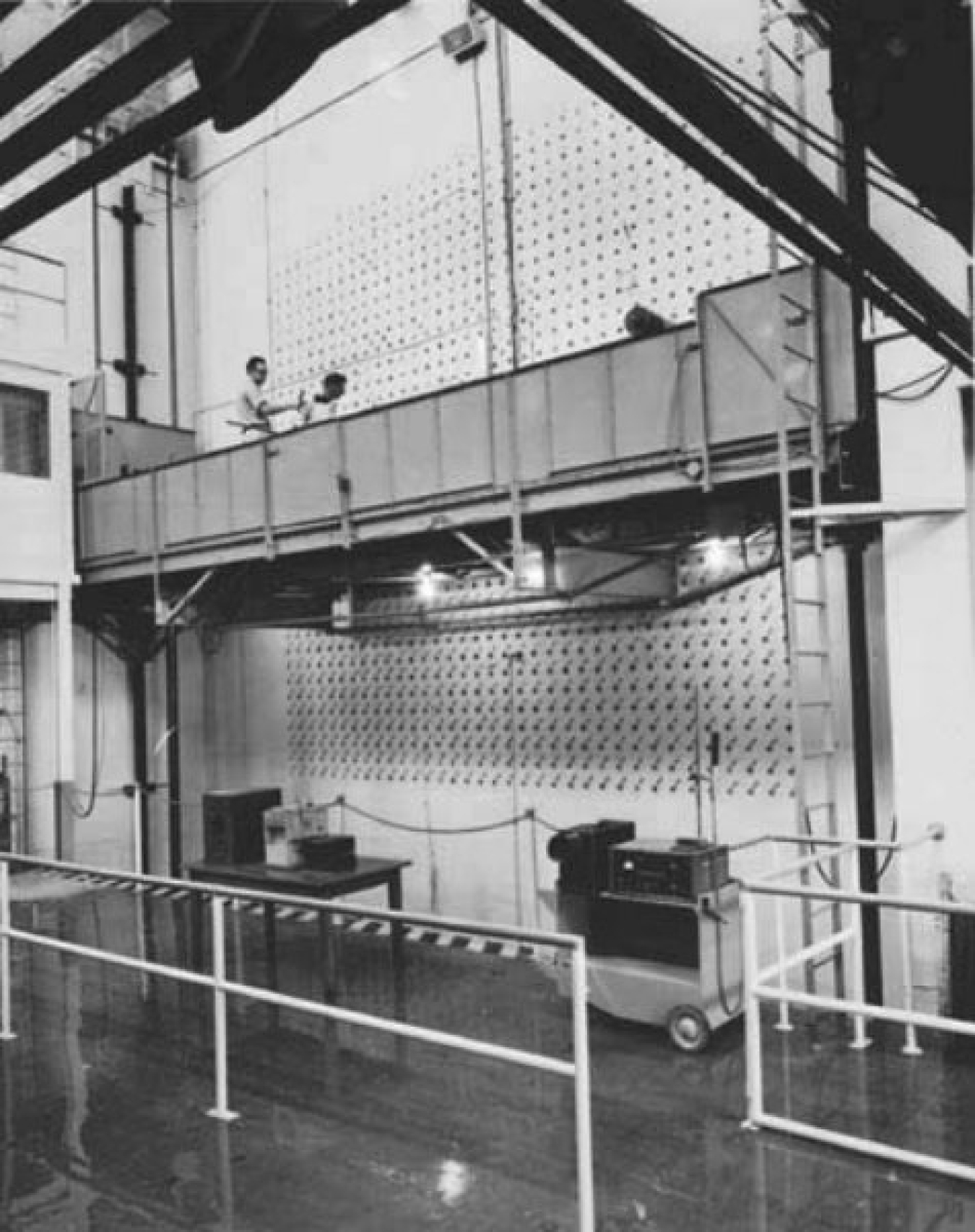
When President Roosevelt in December 1942 authorized the Manhattan Project, the Oak Ridge site in eastern Tennessee had already been obtained and plans laid for an air-cooled experimental pile, a pilot chemical separation plant, and support facilities. The X-10 Graphite Reactor, designed and built in ten months, went into operation on November 4, 1943. The X-10 used neutrons emitted in the fission of uranium-235 to convert uranium-238 into a new element, plutonium-239.
The reactor consists of a huge block of graphite, measuring 24 feet on each side, surrounded by several feet of high-density concrete as a radiation shield. The block is pierced by 1,248 horizontal diamond-shaped channels in which rows of cylindrical uranium slugs formed long rods. Cooling air circulated through the channels on all sides of the slugs. After a period of operation, operators pushed fresh slugs into the channels from the face of the pile and the irradiated slugs would fall from the back wall through a chute into an underwater bucket. Following weeks of underwater storage to allow for decay in radioactivity, the slugs were delivered to the chemical separation building.
The X-10 Graphite Reactor supplied the Los Alamos lab with the first significant amounts of plutonium. Fission studies of these samples from the X-10 heavily influenced bomb design. The X-10 chemical separation plant also proved the bismuth phosphate process that was used in the full-scale separation facilities at Hanford. Finally, the X-10 provided invaluable experience for engineers, technicians, reactor operators, and safety officials who then moved on to Hanford. A National Historic Landmark, the control room and reactor face are accessible to the public.

